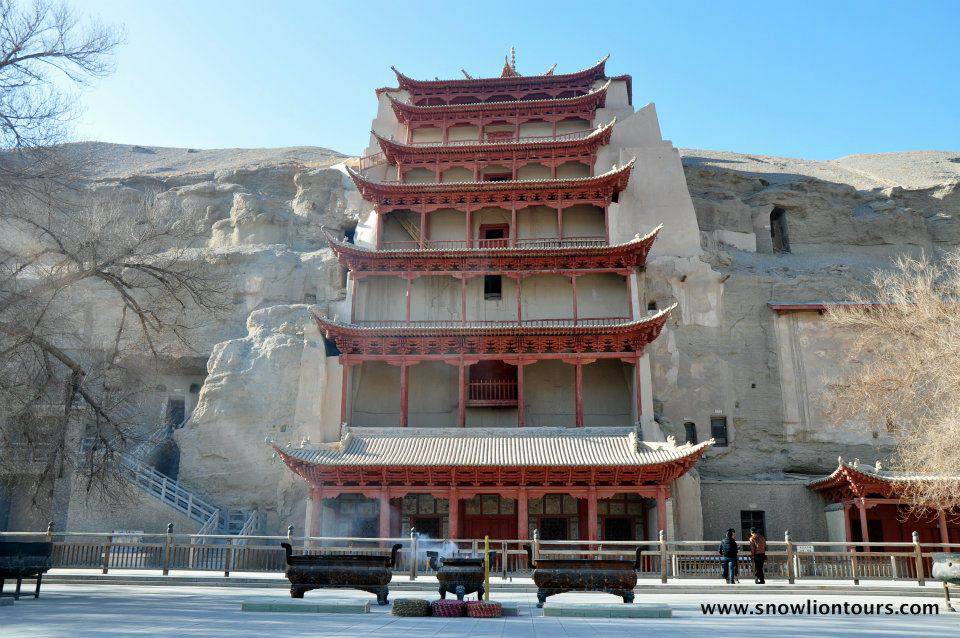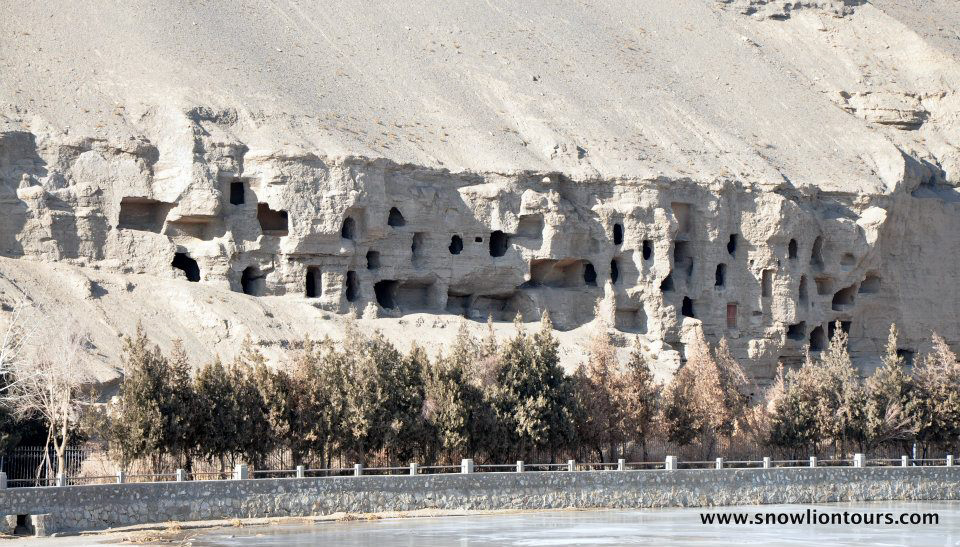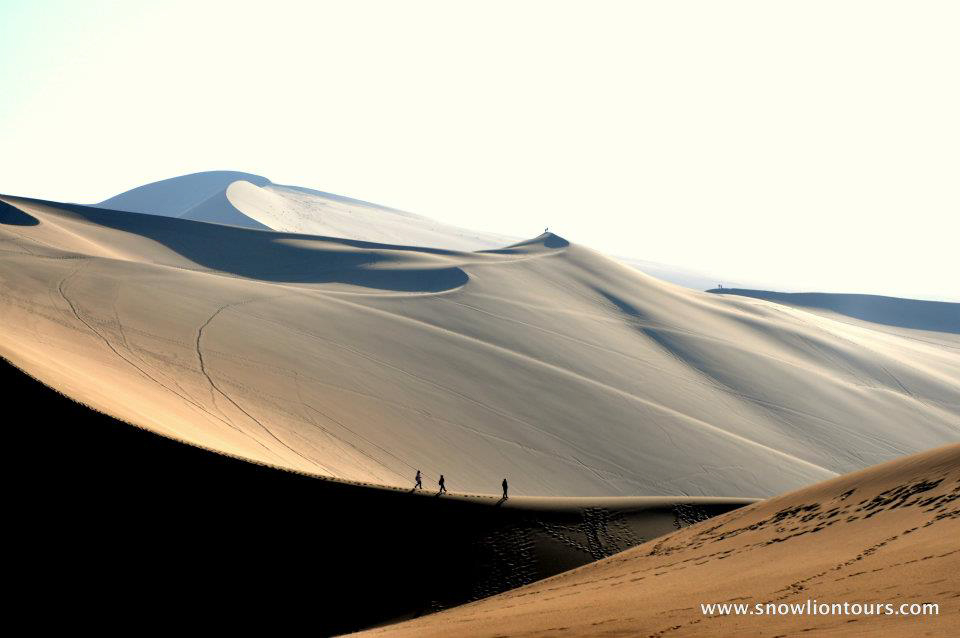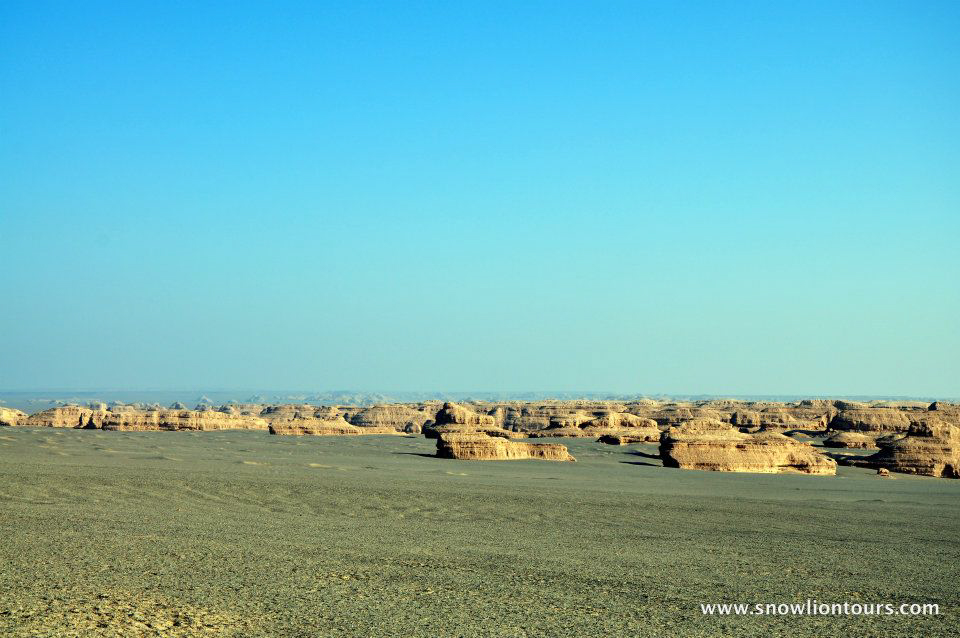Dunhuang is a county-level city in Guansu province in northwest China under the administration of Jiuquan. Dunhuang’s name comes from its function as a garrison town of Han Dynasty, but the Tang name of Sha Zhou describes it better, hemmed in by bleak, pebbly desert and sand dunes. It was an important stop on the ancient Silk Road, passing through the remote garrison town of Loulan and through the Lop Desert.

Dunhuang Camel Ride in the desert
A large number of the early residents of Dunhuang were not Han, and the town came under the sway of the Tibetans, the Uighurs, and Xi Xia, only really becoming a Han town after the colonization of the western regions was initiated during the Qing dynasty. The town is dependent on tourism, and despite efforts to develop other sites, it is the peerless Mogao cave-temple complex that makes Dunhuang a significant stop on the Silk Road and a city with a long history and splendid culture.

The main building of Mogao caves in Dunhuang
Mogao Cave(Mogao Shiku)
The Mogao Caves, also well known as the Thousand Buddha Grottoes, the biggest, best-preserved, and most significant site of Buddhist statuary and frescoes in all of China are all here, which is located 25km southeast of Dunhuang. There are 735 caves in Mogao, and the caves in Mogao are particularly noted for their Buddhist art spanning a period of 1,000 years. The tour takes about two hours and 12 caves will be visited, all the rest are closed. The number of visitors is limited to 6000 a day, so it’s better to book in advance in peak seasons. It is said that the treasure in Maogao caves makes the Dunhuang culture.

Mogao caves in Dunhuang
Mingsha Shan & Yueya Quan
Yueya Quan surrounded by Mingsha Shan with the main peak rising to a height of 1715m, the shape of Yueya Quan is like a moon, so it’s called Yueya Quan in Chinese. If you don’t want to see the lake from up close, you can walk some minutes to find a high one, from the top of the one, you can overview the while lake. You can bike and ride camel there.

Singing Sand Dunes in Dunhuang
Han Dynasty Ruins
If you’re a history buff who is not interested in seeing fake renditions of the Great Wall, this 92km journey into the desert to visit these desolate Han dynasty ruins is a worth-while day trip. The ruins are made of three separate locations: Yumen Gaun, an ancient watchtower made of stone, straw, and mud, and He Changcheng and Han Changcheng. On the way to these ruins, you’ll go by another historic site named Yang Guan. Yumen Guan and Yang Gaun were the ancient borders in Han dynasty. The highlight of the three is Han Changcheng, which is translated as River Warehouse Town. It’s 13km east of Yumen Guan on a dirt road and is a crumbling building that was used as a storage unit. Han Changcheng is 5km away from Yumen Guan, which features one watchtower and a remnant of the Great Wall that’s several hundred yards long.

Dunhuang Ghost Town





